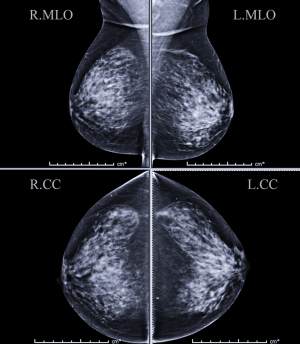by
John R. Fischer, Senior Reporter | July 22, 2019
A new technique may reduce the complex steps necessary for accurately diagnosing or ruling out breast cancer.
Researchers at the University of Southern California have developed physics-based models to provide synthetically-derived data inputs to train machine learning algorithms to quickly and accurately diagnose breast cancer.
“The algorithm developed on synthetic images will use the information embedded in these images to diagnose malignant breast lesions,” Assad Oberai, USC Viterbi School of Engineering Hughes professor in the department of aerospace and mechanical engineering, told HCB News. “Since the synthetic images are generated using the current knowledge of the features of malignant lesions (increased heterogeneity and nonlinearity), it will learn to diagnose malignant lesions based on these features.”



Ad Statistics
Times Displayed: 60606
Times Visited: 1928 Ampronix, a Top Master Distributor for Sony Medical, provides Sales, Service & Exchanges for Sony Surgical Displays, Printers, & More. Rely on Us for Expert Support Tailored to Your Needs. Email info@ampronix.com or Call 949-273-8000 for Premier Pricing.
Nearly one in ten women with breast malignancies are misdiagnosed as cancer-free, while roughly two-thirds who undergo 10 years of annual mammograms are mistakenly diagnosed as having cancer and subjected to invasive interventions, such as biopsies. Techniques such as breast ultrasound elastography — which provides information on lesions based on their stiffness for greater accuracy — are available, but the steps for identifying and quantifying appropriate features for classification are computationally complex and challenging.
Using about 12,000 synthetic images, researchers trained the algorithm to identify different features inherent to benign tumors and those belonging to malignant to make correct diagnoses. They applied it to classify structures in other synthetic images, achieving nearly 100 percent, followed by real-world images. Comparing the real-world image findings against biopsy-confirmed diagnoses for each image, the algorithm scored 80 percent accuracy.
While Oberai sees the algorithm raising the accuracy of diagnoses and reducing operator-to-operator errors as well as unwarranted biopsies, he does not believe it can act alone in making such determinations, and sees it more as a guide for radiologists.
He also notes that while at a disadvantage to real-world images, synthetic images are necessary due to the limited availability of real-world images and data.
“The best case scenario would be to train an algorithm on a mixture of synthetic and real images,” he said. “The synthetic images will make up for the relatively few real images that are typically available, and the real images will bring in features that are yet to be discovered.”
Oberai and his team are currently developing and applying their algorithm, alongside professor Vinay Duddalware of clinical radiology at the Keck School of Medicine at USC, in the diagnosis of renal cancer from contrast-enhanced CT images.
The findings were published in the journal,
Computer Methods in Applied Mechanics and Engineering.

